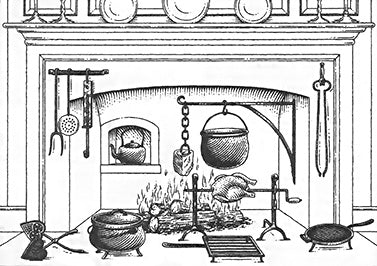Decorative metal handrails, fences, gates, and the like have been popular throughout the ages, making them one of the most timeless decorative accessories to many homes and buildings. The earliest railings were forged from wrought iron in the 15th century by a blacksmith. Early examples can occasionally be found inside churches and historical buildings dating into the late 19th century.
Cast Iron railings did not come into fruition until the second half of the 18th century, following the development of a new industrial processes. However, cast iron was rarely used decoratively on the outside of homes until the late 18th century. Iron was most used for railings mounted on low stone walls and balusters. Cast Iron’s popularity increased during Victorian ages and was widely used for making gates, railings, panels, and other decorative elements.
After the Victorian ages mild, low carbon steel began appearing and is what widely seen in architecture today. Although decorative components are now pressed into form using machinery or imported from Asia and Mexico it is possible to find blacksmiths following the traditional techniques dating back to the 17th century.
In modern day there are various locations worldwide in which you can see the history and craftsmanship of wrought iron and blacksmithing through the ages. One of the most famous and beautiful places to see historic iron work in the US is Charleston, SC. Richard Simmons is most known for his work that flourishes all over the city in his 78 years as a blacksmith. Other Examples of Simmons' work can be seen throughout South Carolina, as well as various pieces that are displayed at the Smithsonian Museum, South Carolina State Museum, Paris, France, and China.
During WW2 across England many sets of iron railings were removed. They were cut off at the base; the stubs may still be seen outside many buildings in London where they have never been replaced. This was done to provide scrap metal for munitions during the war, but there is some skepticism as to whether they were in fact ever used. There are many articles stating that they had such a surplus of iron railings that they began to dump them into waterways to dispose of them.
“In 1942, three years into World War II, the Ministry of Supply ordered that all cast and wrought iron in the city of Bath be removed for war purposes. This included the railings around garden squares, which were generally thought elitist and old-fashioned anyway. Ironwork could be retained on grounds of architectural or historic merit, but retrieval was rare, and much fine ironwork that disappeared, mainly gates and railings, was first recorded by Official War Artists. Since the 1970s much of Bath’s missing ironwork has been restored and the rest has undergone campaigns of repair, notably at Queen Square, Royal Crescent, Lansdown Crescent and Royal Victoria Park. An ongoing project to reinstate overthrows and lighting on the Bathwick estate coordinates best conservation practice, bringing together several materials and technologies of the 1790s.” - Michael Forsyth
“Since then, the rumor has persisted that the iron collected was unsuitable for making planes and instead buried in quarries or dumped at sea, and that it was basically just a propaganda effort. The Public Records Office does not have any records of what happened to the iron collected, it seems the records disappeared or were shredded after the war. In 1978 a journalist claimed the London iron was loaded onto barges and dumped at sea in the Thames estuary” – Matt Black
If not shown more so now than ever the timelessness of wrought Iron designs lives on, repairs and replacements of antique iron fences and railings are a daily occurrence, as well as new builds to give New Homes a timeless aesthetics. Throughout history and modern day, Wrought Iron will always have its place.





